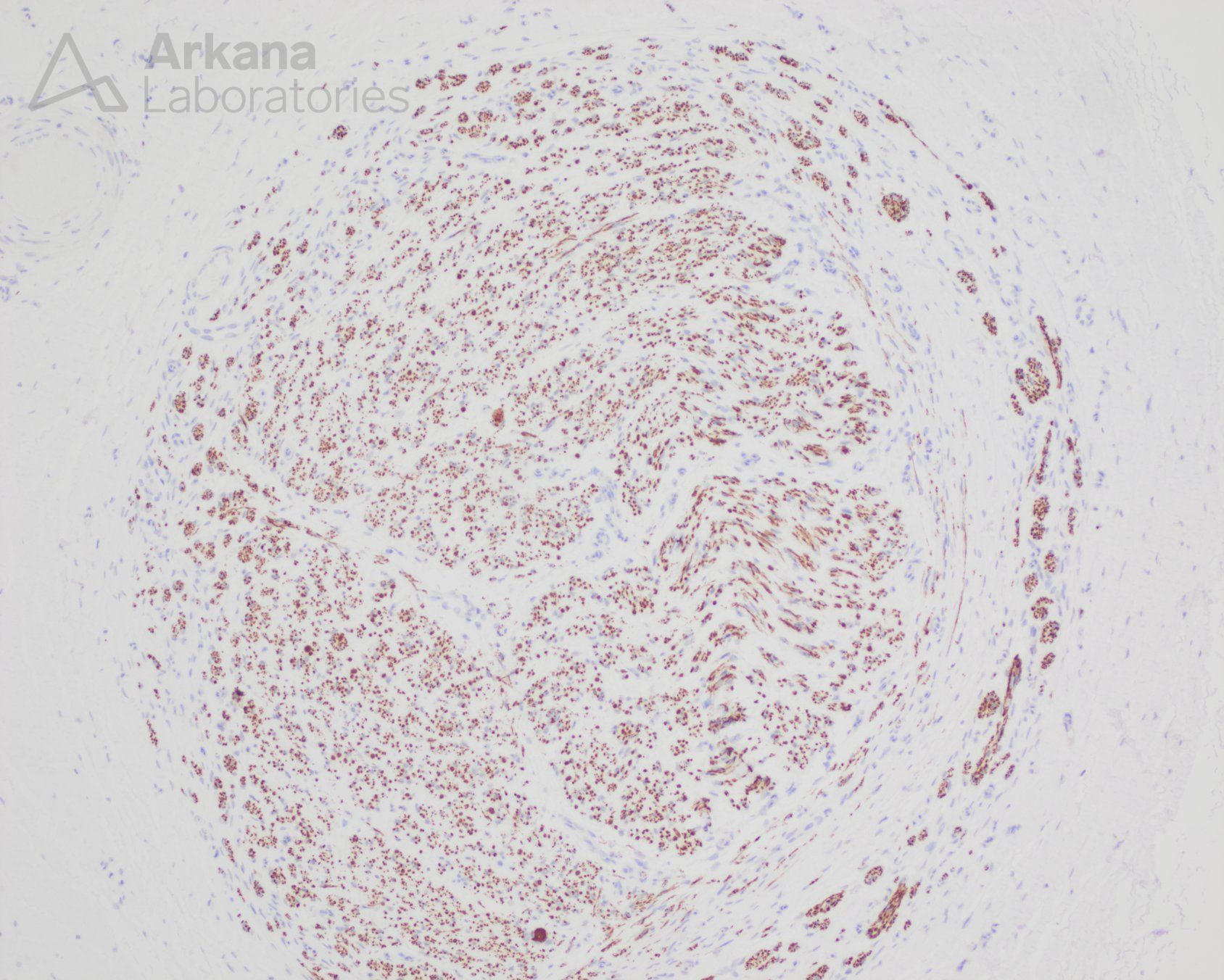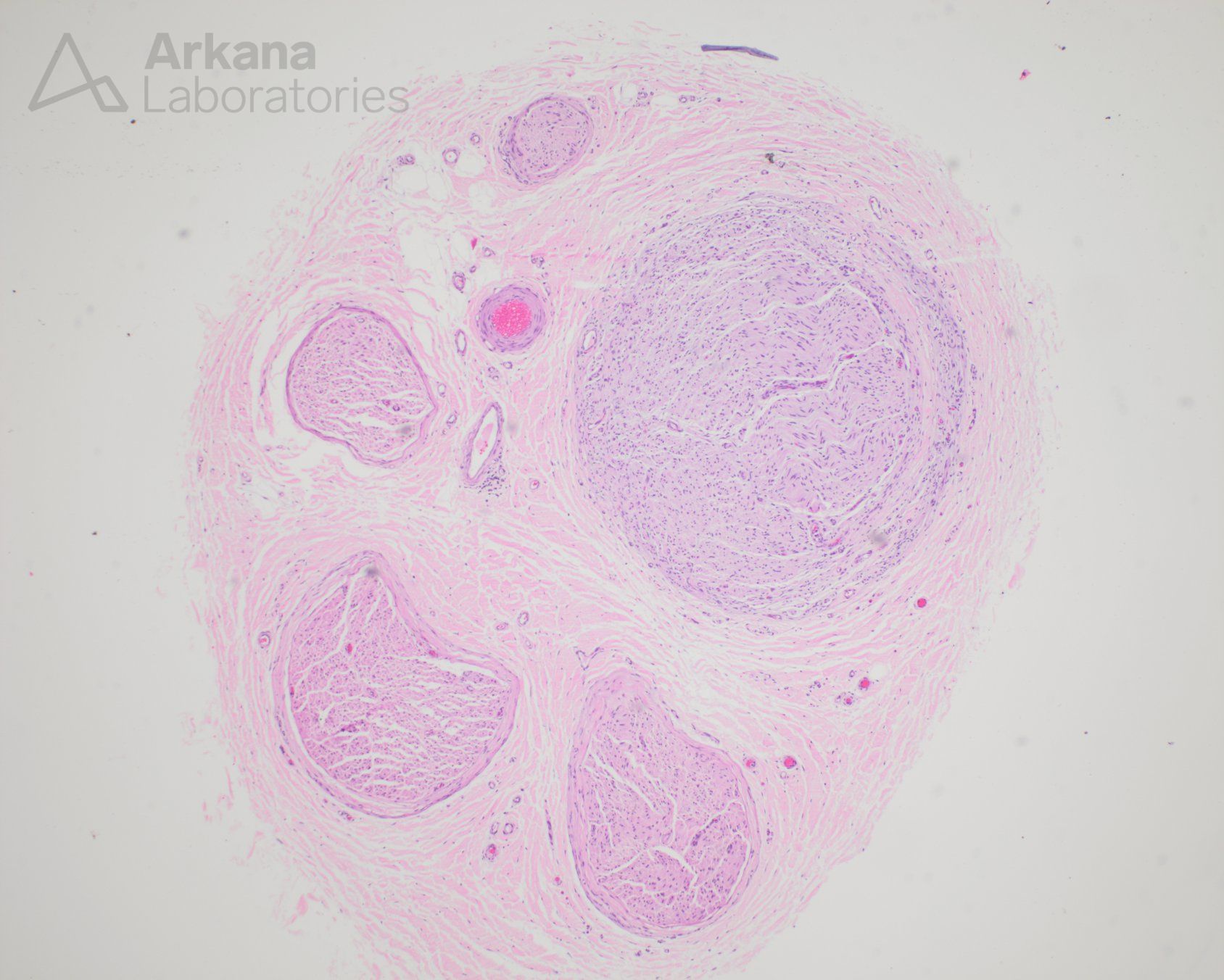Clinical History
This post is a follow-up of our post from last week: https://www.arkanalabs.com/nerve-vasculitis-neuroma/
Last we we showed a 62-year-old man with sudden onset of progressive anesthesia and dysesthesia in hands & feet, and left foot drop. He was pathologicaly diagnosed with active zonal axonopathy suspicious for vasculitis. Today we are showing additional pathology from the same biopsy.
Given a history of likely vasculitis, what’s the mechanism? (Reference images below)
A. Wallerian degeneration
B. ischemia
C. excitotoxicity
D. trauma
Correct Answer: B. ischemia
These reactive lesions are characterized by abnormal proliferation of neurites which blur the normal nerve boundaries. Neurofilament shows small neurites infiltrating around an expanded nerve twig.
Given the history of vasculitis, the most likely mechanism for this would be ischemic injury; however llocalized trauma is also a possible mechanism (“traumatic neuroma”).
Quick note: This post is to be used for informational purposes only and does not constitute medical or health advice. Each person should consult their own doctor with respect to matters referenced. Arkana Laboratories assumes no liability for actions taken in reliance upon the information contained herein.



